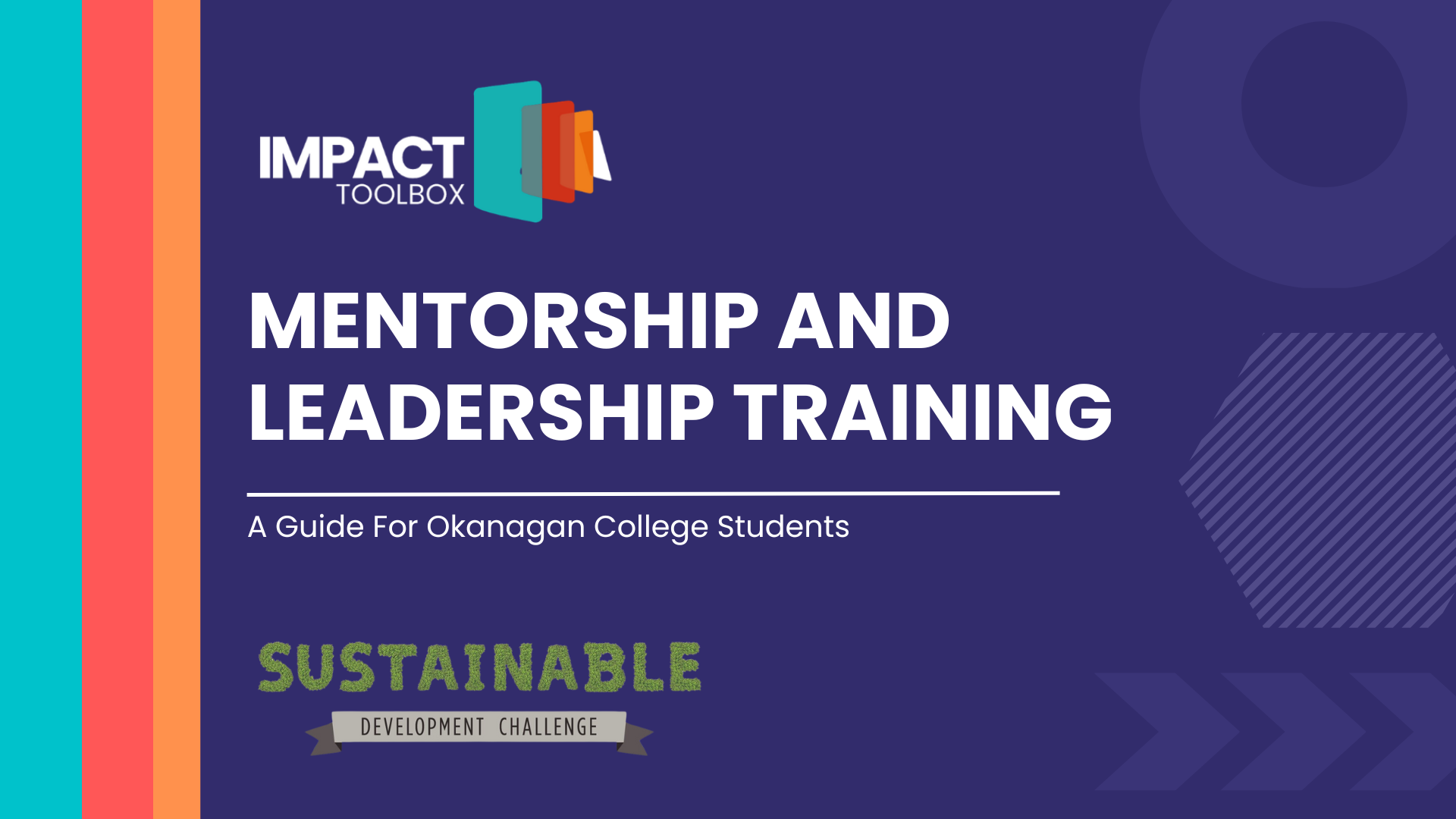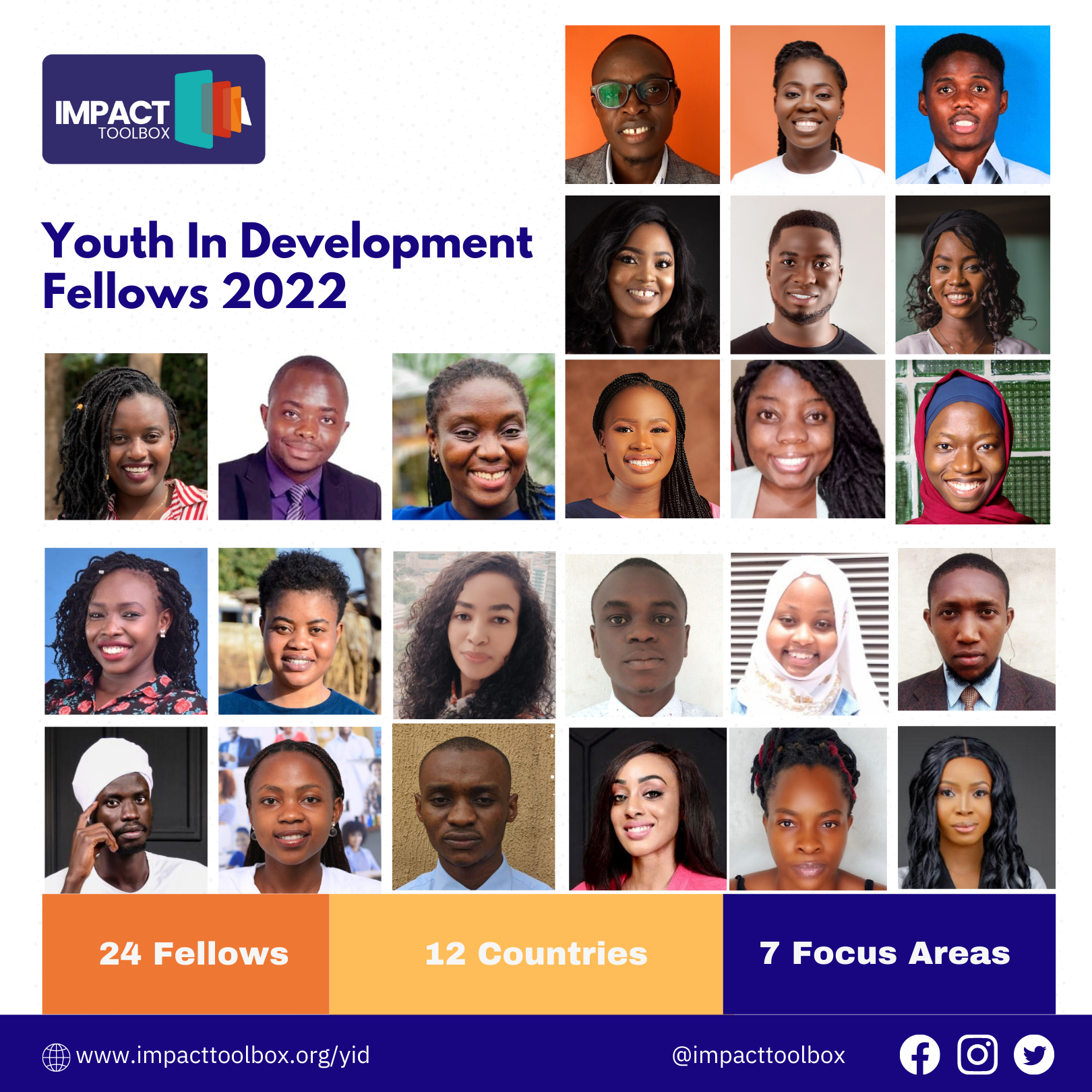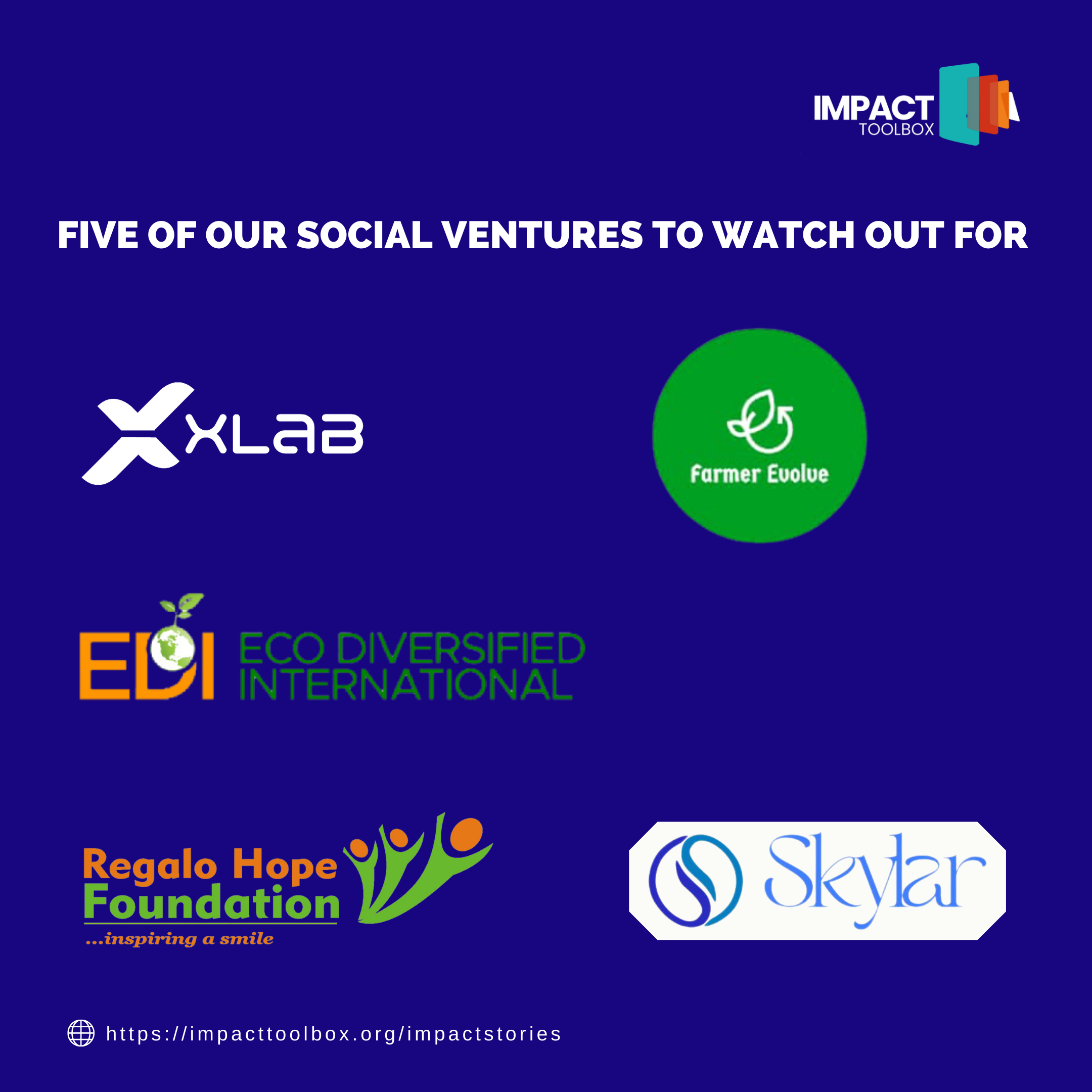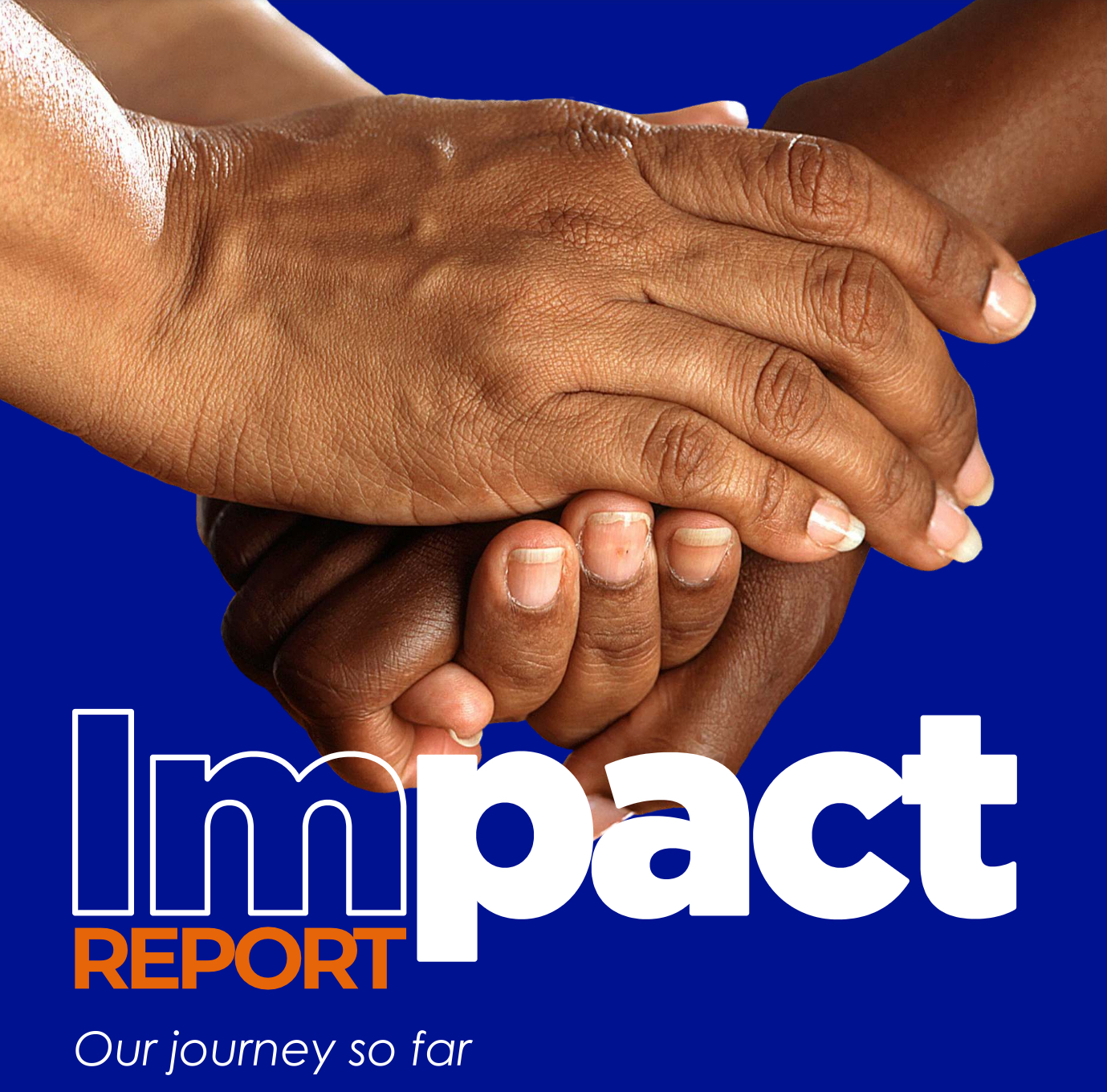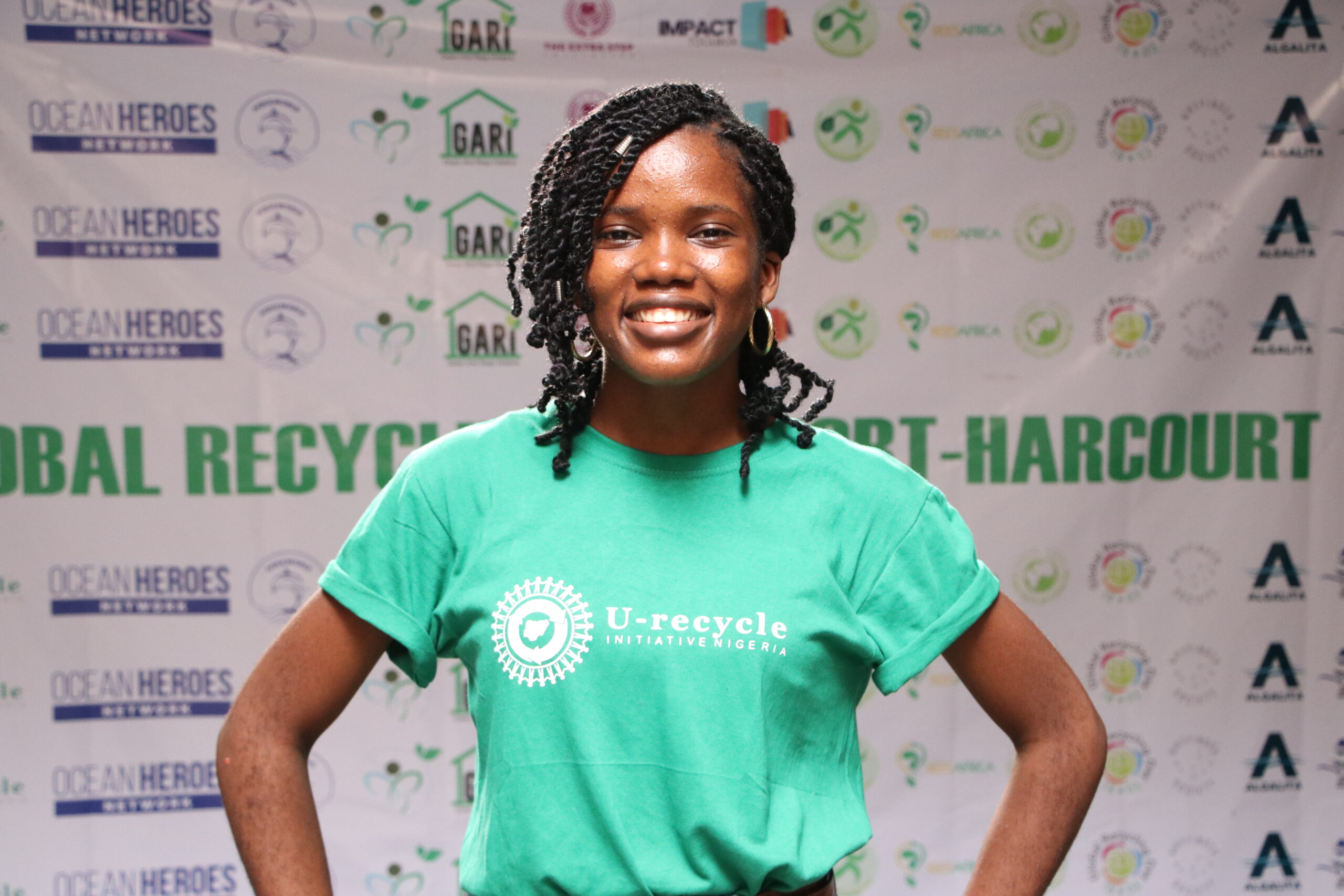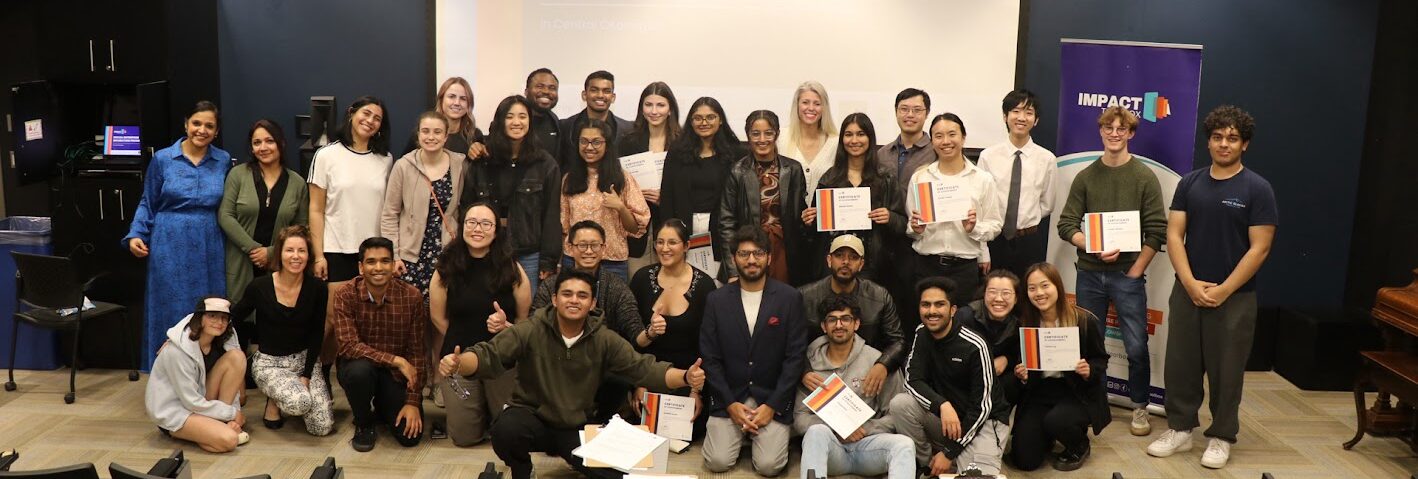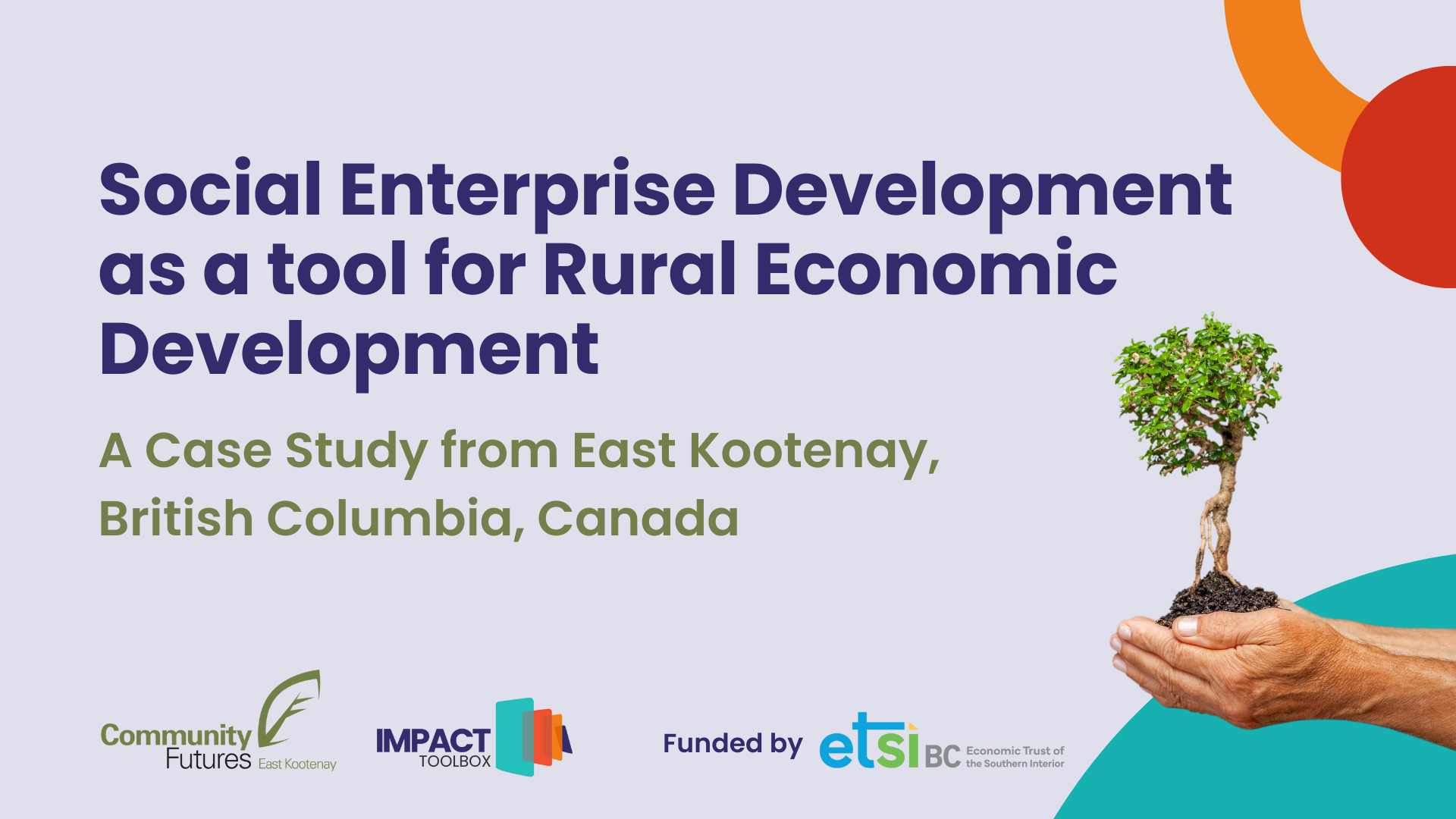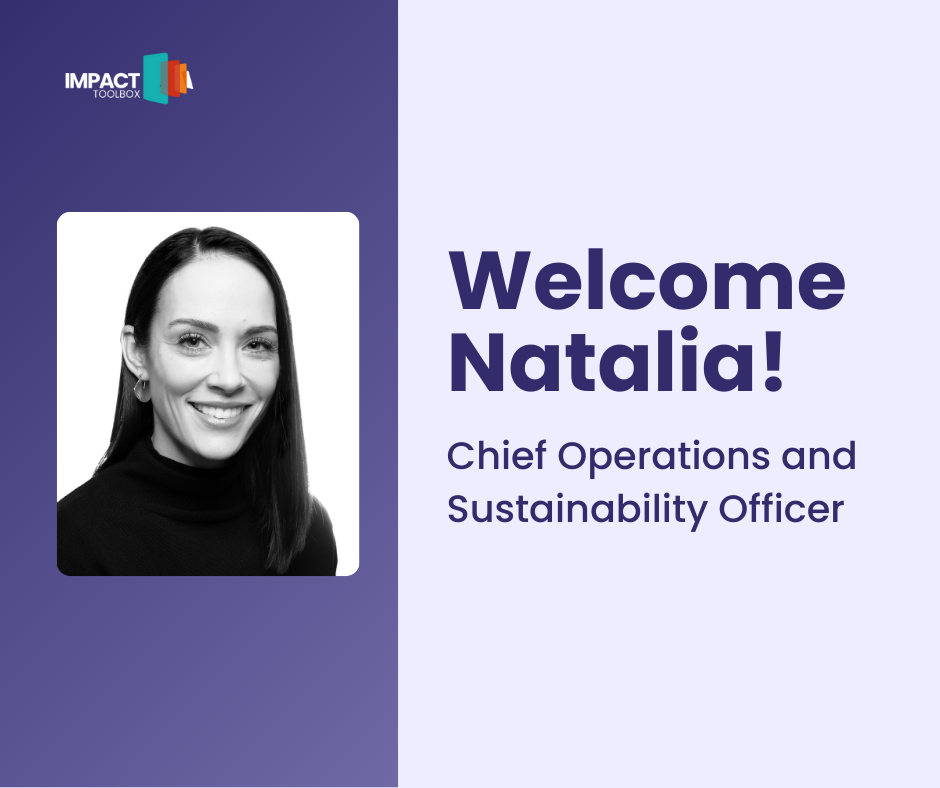Introduction
This guide provides fundamental information about mentorship, leadership, and sustainable development. It describes the plans for mentoring the participants in the sustainable development challenge. It includes step-by-step guidelines on leading and managing the mentorship sessions. While we encourage you to follow this guide, you may also get creative and make each session your own.
Background
Let’s start with the fundamentals. Click the toggles below to learn more.
The sustainable development challenge was started in Kelowna by the Global Citizens Events and over the years partners such as GECCO, and Impact Toolbox has joined forces with them to work together to implement the challenge because we believe young leaders are critical to addressing the UN’s 17 Global Goals for Sustainable Development. In the spirit of Goal # 17: Partnerships for the Goals, we know that together we can do more than alone. This project has served many youths in Kelowna and has produced many youth-led projects that has significantly contributed to the SDGs.
Student teams (grades 8-12) have been working on a “Project & Pitch” to address one of the 17 UN Global Goals for Sustainable Development. Students were asked to choose a goal they are passionate about and partner with a Kelowna-based organization (but the organization can work locally or globally). The six teams you will be mentoring have been invited to continue with the Challenge in Phase 2. They are working on their Written Proposal, live Pitch, and slide deck. They will present their Pitch on February 23rd before a panel of judges and a live audience at the Rotary Centre for the Arts. The top team will receive up to $5,000 in funding, and the remaining teams may receive a portion of their budget from implementing their idea!
The United Nations defines sustainable development as development that meets the needs of the present without compromising the ability of future generations to meet their own needs. It means ensuring development is sustainable by ensuring that it fulfils present needs while not destroying the prospects for fulfilling the needs in the future.
This definition has implied an understanding of sustainable development as an intergenerational equity relay race of sorts, where the needs of humanity are expressed in a generous commitment to the ethical exploration of the human capacity for development and growth from generation to generation. In the simplest terms, it means ensuring that we develop our communities and use resources effectively to ensure our children and those who will come after them will not lack vital resources. It is the development that can continue indefinitely and a paradigm where society interacts with the environment without damaging the available resources for the future.
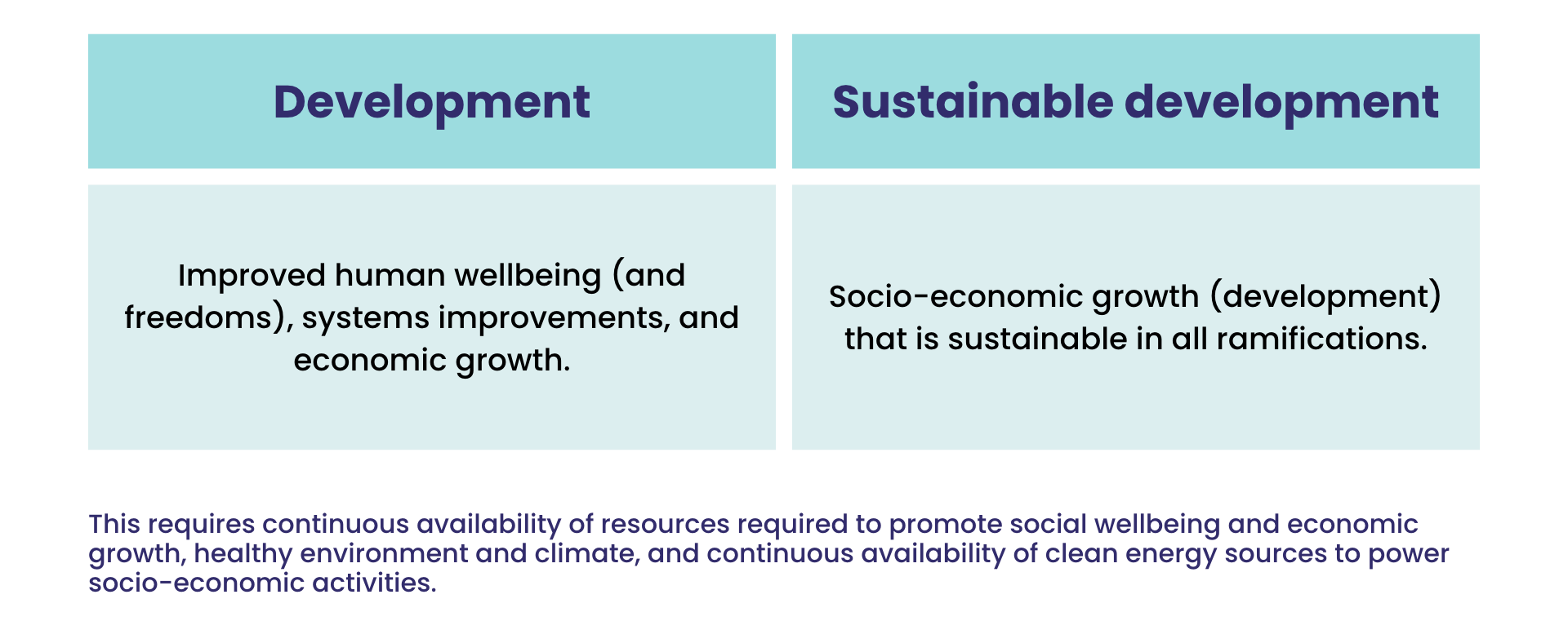
Other Definitions of Sustainable Development
- Gasparatos et al. (2009) define sustainable development as an approach that provides a more significant holistic consideration of economic, social and environmental needs through equitable and sustainable use of resources.
- Geissdoerfer et al. (2017) call it the balanced integration of economic accomplishment, social inclusiveness, and environmental resilience to benefit the current and future generations.
- Mensah (2019) defines sustainable development as ensuring a balance between economic growth, environmental integrity, and social well-being. Recent scholarship has also included cultural and institutional sustainability.
Hence, sustainable development is not just a theory or political rhetoric but an ambition that requires drastic, urgent, and precise actions. Human’s peaceful, healthy existence on earth and our prosperity depend on ensuring the ideals of sustainable development.
Sustainability
This could have two meanings. Sustainability is the continuous availability of resources required for human activities over a long period and can also mean environmental protection and climate stability. It is the capacity to endure over time by enhancing social and natural flourishing, vibrancy, resilience and adaptation and the dynamic equilibrium that allows human activities at full potential to meet human needs without irreversible adverse effects on the environment. Simply put, sustainability is protecting the environment and managing every resource at our disposal effectively to ensure we don’t run out of them.
“Sustainable” in “sustainable development”
From our understanding of sustainability above, we can infer that “sustainable” points to the continuous availability of the resources required to promote social well-being and economic growth. It also emphasizes environmental protection, climate change prevention, and the availability of a continuous clean energy source to power socio-economic activities. Sustainable development is social-economic growth that is “sustainable” in all ramifications.
Sustainable development requires a careful balance of three pillars. They are economic growth, social equity, and environmental protection.
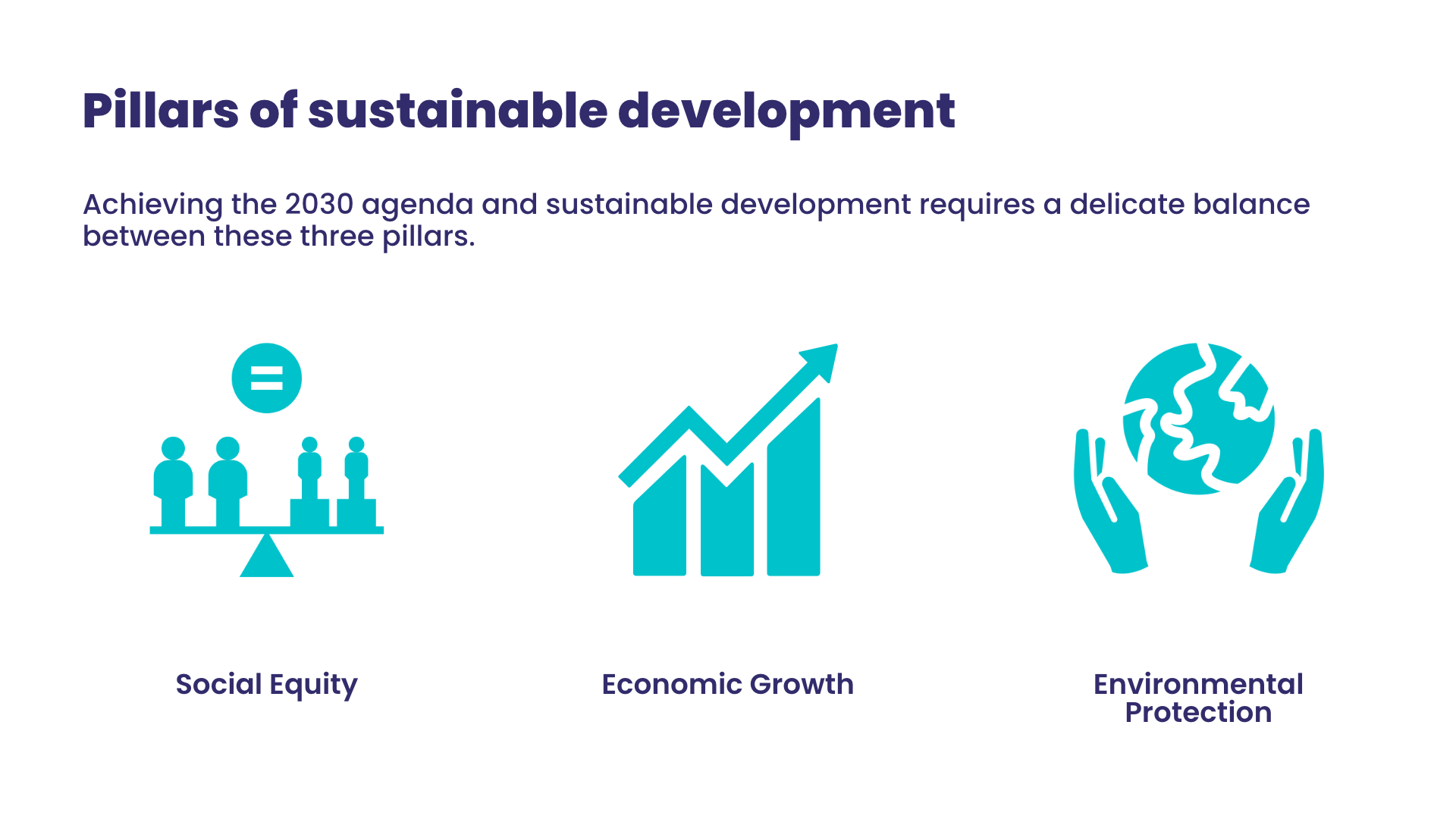
- The social equity/wellbeing pillar promotes solidarity and cooperation among people and communities. It could also include citizens empowerment, accessibility, participation, cultural identity and institutional stability.
- The economic growth pillar stands for improved quality of life through economic self-determination and self-development of people and societies. Economic sustainability indicates a production system that helps meet present consumption rates without compromising future needs.
- The environmental sustainability/protection pillar ensures the preservation of natural resources to maintain the optimal functioning of the earth’s ecosystems.
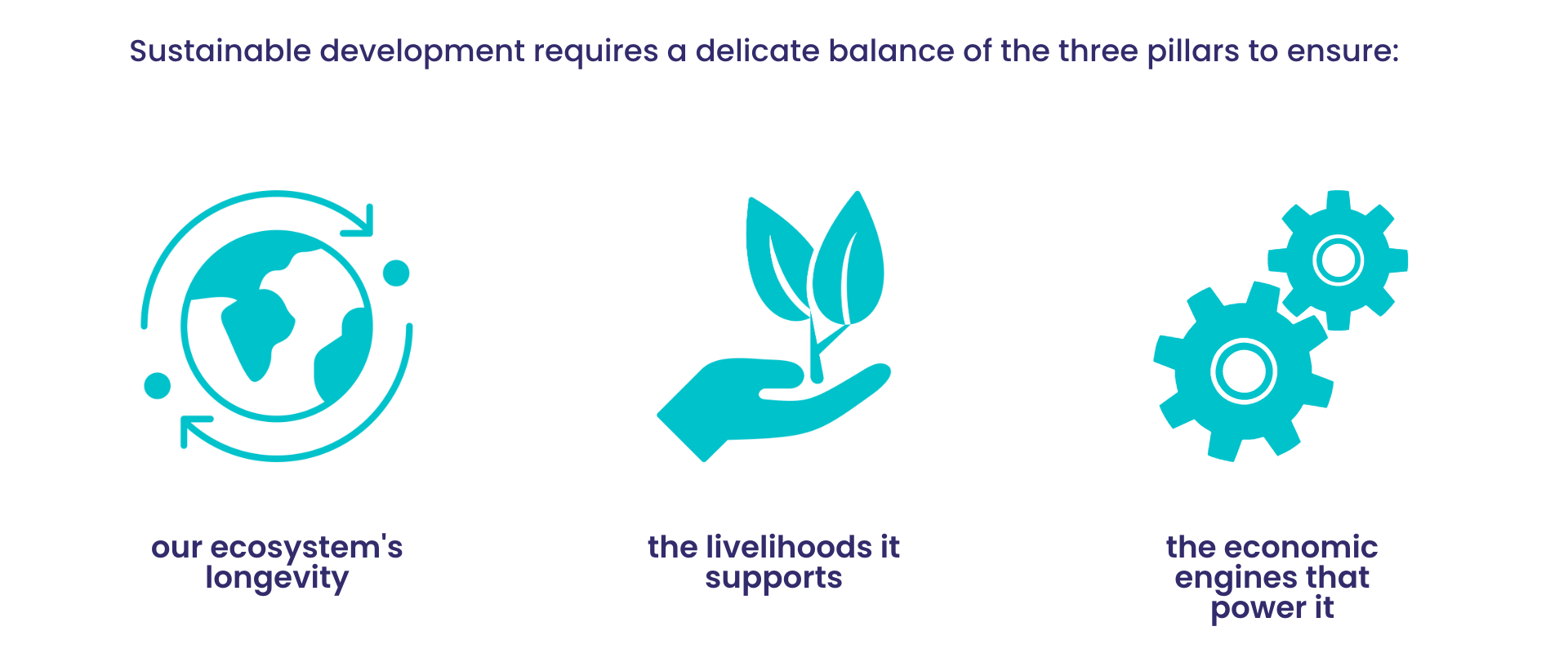
Sustainable development depends on a clear understanding of the possible trade-offs and a delicate balance to ensure the ecosystem’s longevity, the livelihoods it supports and the economic engines that power it.
The Sustainable Development Goals (SDGs) framework is a goal-based global policy agenda based on sustainable development and its pillars. It consists of seventeen goals and 169 targets expected to be achieved over fifteen years. These global goals and their targets help transform the ideals and principles of sustainable development into a series of actionable objectives. It was named after 2030, the expected date for its attainment.
It is the successor to the Millennium Development Goals (which targeted developing countries explicitly). It is a consensus on the universality of the problems of extreme poverty, straitened access to education and good health and the avoidable human threats to the environment. It is a resolution of 193 countries of the United Nations, formalized on September 25, 2015, at the United Nations sustainable development conference in New York.
According to the United Nations declaration of the 2030 agenda, the SDGs will build upon the achievements of the MDGs while seeking to address unfinished businesses. The 2030 agenda is universal, transformative, and indivisible. By universal, it is collectively owned by all countries of the world, notwithstanding their levels of development.

The Goals
The goals are universally applicable and expected to mobilize efforts to end all forms of poverty, fight inequalities, and tackle climate change. The ‘Global Goals’ aim is ‘leaving no one behind. The first sixteen goals are towards implementation, while the 17th is towards collaborations and synergies to support the implementation. The commitments are universal, and the goals are interdependent. The sustainable development goals aim to marry the need for growth with the urgency of sustainability.
The lines between development and sustainability are blurred, just as the interconnectedness of these goals becomes prominent as one moves from one goal to the next. The figure below illustrates a classification of the goals into five interrelated categories inspired by Katherine Richardson (Professor, University of Copenhagen).

Where the sustainable development challenge participants come in is in creating projects such as social enterprises that can leverage innovations to create the required balance between the sustainable development pillars.

A project contributing to sustainable development must consider long-term continuity and environmental consequences or benefits. It must also balance economic growth, environmental protection and promotion of social well-being. Hence your mentee’s project must meet the following criteria:
- Meet critical needs: The project addresses an apparent problem(s) or need(s) that is a root cause. The team understands the issues deeply.
- Innovative: The project is unique and different from existing solutions
- Be sustainable: The team has thought about the future of the project and its continuity
- Potential for large-scale impact: The project can contribute meaningfully to the chosen SDG goal(s).
- The team can deliver (support, commitment, and passion).
Mentorship Basics
To learn how to serve as an effective mentor, click the toggles below.
Micro-managing: Mentorship differs significantly from micro-management. While micro-managing involves closely controlling every aspect of an individual’s work, mentorship focuses on guiding and advising rather than controlling.
Providing All the Answers: A mentor’s role is not to provide all the answers to their mentees. Instead, it involves helping mentees develop the skills and confidence to find answers on their own.
A Vertical Relationship: Mentorship is not a top-down, authoritative relationship. It’s a partnership where the mentor and the mentee learn and grow together. The mentor provides guidance, but the relationship is built on mutual respect and collaboration.
Build Genuine Relationships: Establishing a strong, authentic relationship with your mentee is crucial. This involves showing genuine interest in their development and being open and approachable.
Gain the Trust of the Mentees:
- Establishing Credibility: Demonstrate your expertise and reliability. Share your experiences and knowledge in a way that resonates with your mentee.
- Exercising Empathy: Understand and relate to your mentee’s challenges and aspirations. Be an active listener and show that you genuinely care about their concerns and progress.
Instill Confidence: Remind them of your previous discussions on leadership and how those principles apply to their development. Encourage them to take the lead in their learning and decision-making processes.
Guide and Support: Offer guidance and support without taking over. Help your mentees navigate through challenges by suggesting strategies, providing resources, or sharing your own experiences.
Provide Feedback to Improve Ideas: Offer constructive feedback that helps refine and improve your mentee’s ideas and projects. Be honest yet supportive in your critiques.
Identify and Encourage Small and Near Wins: Recognize and celebrate even small achievements and progress. It’s important to acknowledge your mentee’s efforts and strides, as this can be incredibly motivating. When there are no ‘obvious’ wins, highlight the silver linings and learning opportunities from the experiences they have encountered. This practice fosters resilience and a positive outlook.
- Believe and Trust: Show that you have faith in their objectives and trust in their capability to achieve them.
- Be Committed: This may require you to devote your time and knowledge and sometimes even be vulnerable.
- Practice Humility: Admit when you don’t know something and be willing to learn.
- Learn and Research: Have a good understanding of their project, selected Sustainable Development Goals (SDGs), and industry trends.
- Practice Active Listening: Be attentive and engage in active listening to understand their needs and concerns.
Be attentive: Listen, be present, pay attention to body language, and be empathetic.
Reflect: Think deeply about what you have heard rather than what to say next.
Summarize & clarify: Repeat what you heard and ascertain what they meant.
Avoid judgment: Be open-minded.
Share and provide feedback: When giving feedback – critique, DON’T criticize. To critique, use the following format: I like _______, I wish ______, I wonder _______
For example, I like your project leveraging technology to reduce textile waste. I wish your projects targeted other age groups besides students; I wonder if you have considered your technology’s cost implications.
SDC Mentorship Plan
Click the toggles below to see what is expected of you throughout the mentorship process.
Step One – Introductions (5 mins): Introduce yourself and get to know each team member. It is essential to learn their pronouns, preferred names and correct pronunciation.
Step Two -Discuss a simple team contract (10 mins): Your contract may include these two simple components below. A team member may take note.
- Objectives: Set clear expectations and goals. This may be the aspect of their project they need the most help or guidance.
- Work & communication plan: How do you intend to work together? Do you want to communicate outside of meeting times? Do you want to create a google document for easy feedback?
Step Three -The team shares their idea(s) with the mentor(s), and the mentor(s) gives feedback on ideas while guiding the team to ideate further (45 mins): After listening to the team’s idea, below are some guiding questions to consider for analyzing the idea:
- Will the idea meet critical needs and be aligned with a sustainable development goal?
- Is the idea innovative and sustainable?
- Do the team members have the necessary geographical and cultural awareness?
- Has the team found an appropriate community partner?
- Does the idea have the potential for large-scale impact
- What are the significant risks, threats or weaknesses of this idea?
Task One – Research: Before meeting, research other local and global initiatives similar to your mentee teams’ projects, preferably youth-led. Share best practices and lessons learnt from the examined case studies.
Task Two: Thoroughly examine the proposal with regard to the SDC committee proposal evaluation rubric. Below are what to look out for (project proposal evaluation criteria).
- Project Description: 15 points
- Team Member Description: 5 points
- Community Partner Organization Description: 5 points
- Mentor Descriptions: 5 points
- Geographic & Cultural Awareness: 7 points
- Sustainability: 7 points
- Budget: 12 points
- Outcomes & Impact: 8 points
- Promotion & Social Media: 5 points
Note: You are not expected to grade the proposal. This rubric is just for your information only.
This session will include three rounds
- First round (Coaching): The team is allowed up to 15 minutes for their full pitch presentation. Mentors will coach by providing feedback and suggestions.
- Second round (Evaluation): The team must present a full pitch in 10 minutes. Mentors are to provide short feedback and questions in 10 minutes.
- Third round (Simulation): The team must present full pitch in 10 minutes. This time, mentors are to act as judges, ask questions, and provide an evaluation score based on the below criteria.
Pitch Evaluation Criteria:
- Presentation Clarity and Organization: Is the presentation flow smooth, logical, and easy to understand? Does it cover the key points of the written proposal and tied to the SDGs (10 points)
- Presentation Creativity (5 points)
- Presentation preparedness: Students are confident and prepared and stick to the time limit. (5 points)
Final Notes
- Learn more about SDC on the program website
- SDC prep course provided by Impact toolbox
Send us a message for questions or concerns: toluwanimi@impacttoolbox.org, segun@impacttoolbox.org

